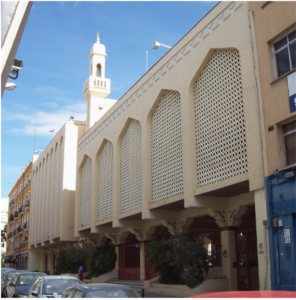Written by: Brad Donegan (Session 1)
Apollo in the Forge of Vulcan by Diego de Velázquez is an incredibly famous painting from 1630 after Velázquez first visited Italy. The painting depicts Apollo, the god of the sun, coming to Vulcan’s forge to inform him of his wife’s infidelity. Vulcan, the god of fire, is the man closest to Apollo and can be characterized by the wild look of shock and anger in his eyes as he receives the news. The brilliant and otherworldly presence of Apollo is emphasized by the bright lines radiating from his head, which indicate the aura of light and truth that Apollo carries. Apollo’s crown of leaves and bright orange clothing further accentuate his status as the god of light and confirm the validity of the news of Venus’s adultery. Apollo’s radiance mainly lights Vulcan, and the shadows around the back of Vulcan’s torso represent his fury from hearing of his wife’s adultery. His hands are shrouded in shadows as he clutches his forging tools, implying that he may seek violent revenge on whoever is responsible for sleeping with his wife; the manic look in his eyes greatly indicates that he is both furious at the news and astonished at the appearance of Apollo. The other men in the forge share looks of disbelief; their mouths hang open and their eyes are wide at the sight of Apollo’s bright figure. There is a fifth man who stands in a darkened room in the background of the painting. This man is different from the rest not just because of his location; he stares at Apollo with a look of disdainful disinterest, and his location in the shadows may imply that he had something to do with the destruction of Vulcan’s marriage. All of the men in the forge are wearing very minimalistic clothing, using drab rags to cover their lower halves. This greatly juxtaposes Apollo’s bright and regal-looking clothing. The laborious and dirty work of constructing armor in the forge further juxtaposes the positions of Apollo and the men in the forge. This painting makes me feel the fantastical status of Apollo’s figure while simultaneously accentuating Vulcan’s fury towards the news. The way that the painting uses shadows and light to represent the turmoil of the characters is fascinating and I think effectively tells the story of Venus’s infidelity.


